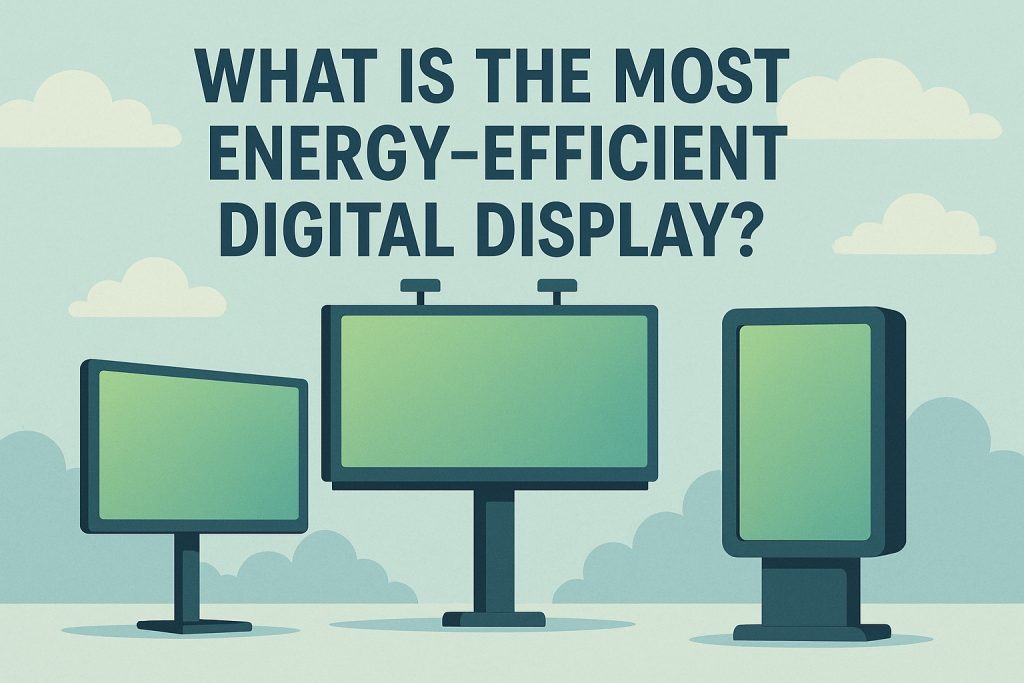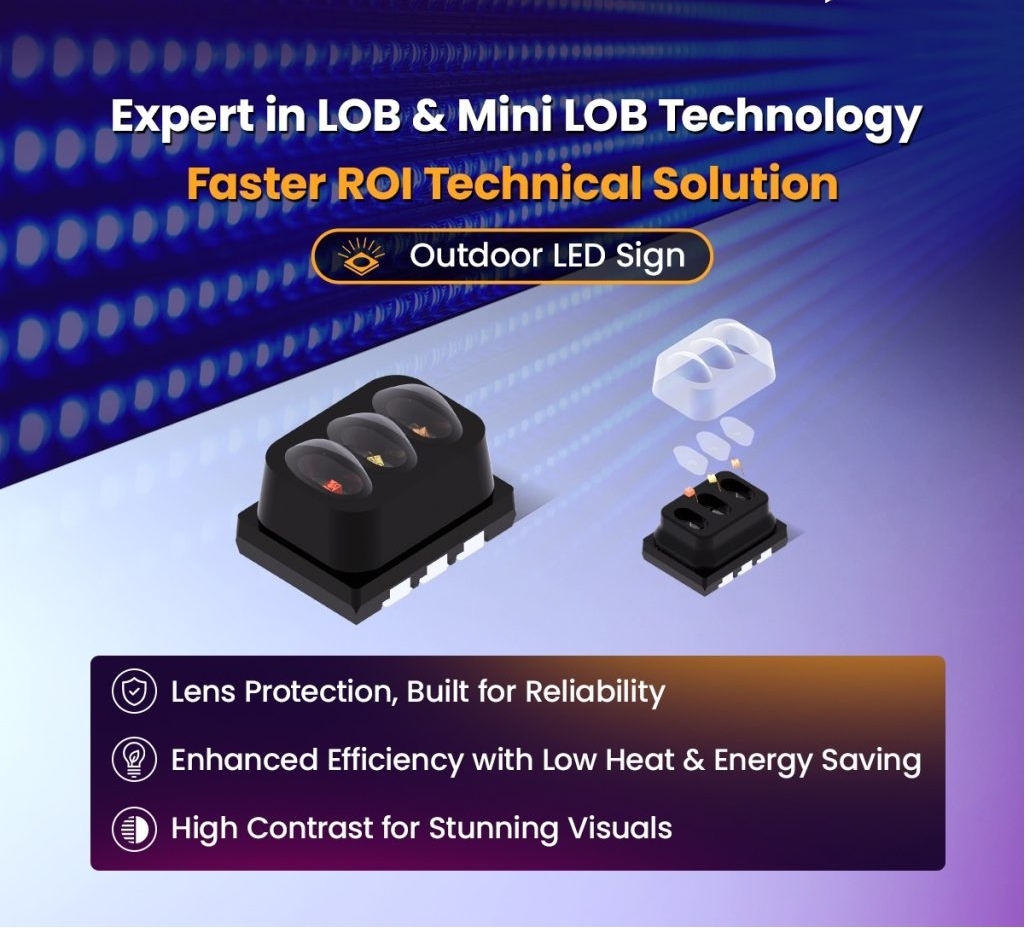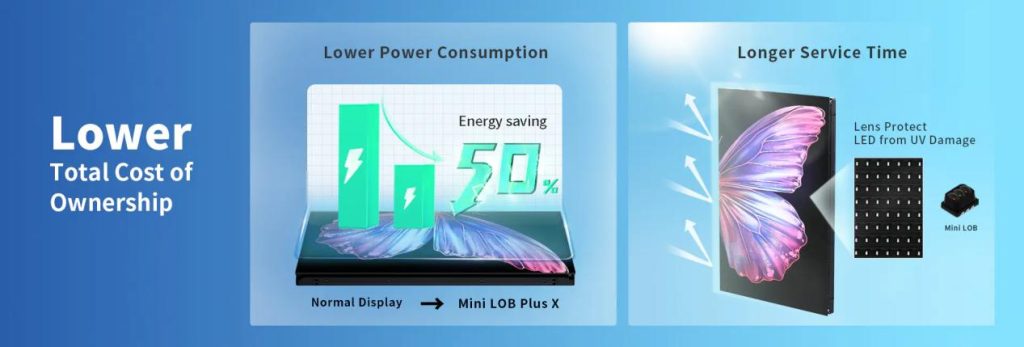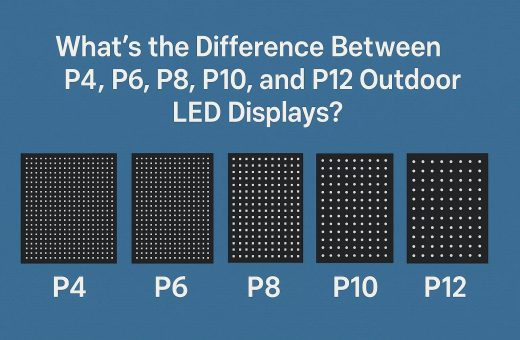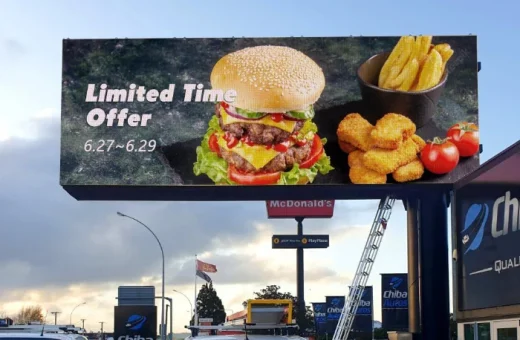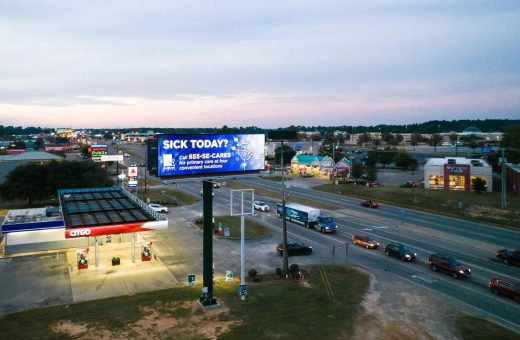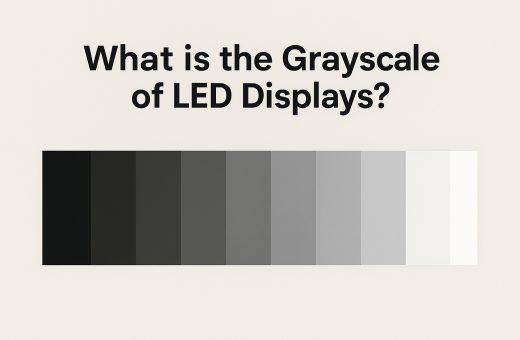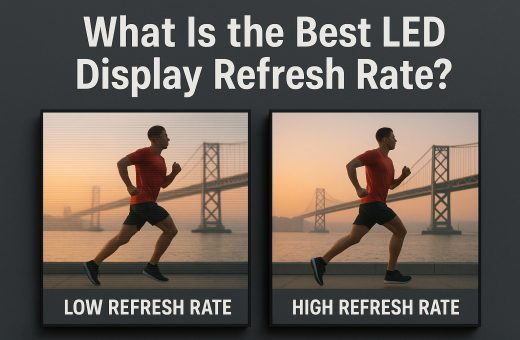Table of Contents
Digital displays are widely used in both indoor and outdoor settings, enabling businesses to deliver content quickly and clearly to their audiences. Increasingly, companies are prioritizing energy-efficient displays, aiming not only to reduce operational costs but also to support sustainability goals and minimize environmental impact.
In this article, Chainzone will explore how various display technologies differ in power consumption and help identify the most energy-efficient display for modern applications.
Different Display Technologies and Their Energy Consumption
To select the most energy-efficient display, it’s essential to understand the underlying screen technologies. Below are five common display technologies used in energy-efficient displays:
1. LCD Display Technology
Liquid Crystal Display (LCD) technology relies on a backlight that shines through liquid crystals to generate images. The backlight remains on regardless of the screen content, resulting in continuous energy consumption.
Typically, LCD energy usage ranges between 20 and 150W/m², depending on the screen size and brightness settings. Although more efficient than older display solutions, LCDs are generally less efficient than direct-view emission technologies, especially because the backlight is always on—even for dark images.
2. LED Display Technology
LED displays utilize light-emitting diodes either directly (as in large signage) or as backlight units for LCD panels. In direct-view LED displays, each pixel emits its own light, resulting in higher brightness and improved energy efficiency. Typical power consumption can vary widely, ranging from 100 to 1000 W/m².
Direct-view LED displays—especially those used outdoors—are usually more efficient than LCDs with comparable brightness and size. Additionally, LED displays often support dynamic dimming and selective lighting, which further optimizes energy usage, particularly in high dynamic range or outdoor signage.
Learn more about LED vs. LCD:
LED vs. LCD: Which Is Better for Outdoor Digital Displays?
3. OLED Display Technology
Organic Light-Emitting Diode (OLED) displays have self-illuminating pixels, meaning each pixel generates its own light. This design eliminates the need for a backlight, allowing for true blacks (pixels can be turned off entirely). This feature makes OLEDs highly power-efficient, particularly for darker scenes.
It should be noted that OLED power consumption varies depending on the screen content. Bright, all-white content will consume more power and, in some cases, may even exceed the energy usage of comparable LCDs.
4. MicroLED Display Technology
MicroLED represents a next-generation self-emissive display where microscopic LEDs form individual pixels. MicroLEDs offer power-saving benefits, along with superior brightness, a wide color range, and an extended lifespan.
In practical usage, MicroLEDs can be significantly more energy-efficient than traditional LCD or OLED panels. They also maintain efficiency at higher brightness, making them suitable for large displays and professional signage.
Note: MicroLED displays utilize tiny light-emitting diodes, typically defined as under 100 microns in size. This supports ultra-fine pixel pitches—often under 0.9 mm—ideal for fine-pitch display applications.
5. LOB Display Technology (Lens on Board)
LED packaging technology is also an approach to maximizing LED display efficiency, and LOB (Lens on Board) is Chainzone’s solution for creating superior energy-efficient displays. It involves placing a precisely engineered optical lens directly over each LED element, optimizing the direction and intensity of emitted light.
By directing light more efficiently, LOB can deliver equivalent (or higher) brightness with significantly lower energy input compared to conventional Surface-Mount Device (SMD) LED displays. It can achieve energy savings of up to 80% compared with traditional SMD outdoor LED displays.
For example, the LOB display (P16), at a brightness of 6000 cd/m², has an average power consumption of 30 W, compared to 150 W for SMD and 70 W for DIP displays, making it the most energy-efficient display among these three options.
What Affects Digital Display Energy Efficiency?
Here are some important factors that influence real-world display energy efficiency.
1. Brightness Settings
Brightness settings directly impact power consumption. A display running at full brightness consumes significantly more energy than one adjusted to ambient lighting conditions.
Often unknowingly, some businesses operate displays at maximum brightness, leading to unnecessary energy consumption. Adaptive brightness controls, which adjust output in real time based on environmental light, can lead to substantial energy savings without compromising visibility.
2. Content Displayed
The type of content displayed on the screen also affects power consumption. Dynamic videos, high-motion graphics, and full-color animations typically consume more energy than static images or text-based slides. For displays that operate continuously, especially in commercial environments, optimizing the mix of content types can help reduce overall power consumption while keeping the viewers engaged.
3. Special Lens Structures
Advanced lens technology and optical structures—such as customized lens overlays on LED modules—precisely direct light where it is needed. This method minimizes wasted light (and thus energy) while maintaining a high perceived brightness.
For instance, Chainzone’s PlusX series utilizes the miniLOB technique to achieve 10,000 nits at 400W—approximately 50% less energy than typical outdoor displays with comparable brightness. These innovative lens designs are particularly valuable for large-format outdoor signage, significantly enhancing energy efficiency.
4. Operating Hours
The total time a display is powered on directly influences its annual energy consumption. Reducing unnecessary “on” time—such as dimming during nighttime hours or scheduling automatic shutdowns—significantly lower total energy consumption.
5. Environmental Conditions
Displays exposed to harsh external conditions (heat, direct sunlight, humidity) may require additional energy for cooling systems or higher brightness to maintain visibility. Technologies that can resist weather changes or reduce thermal buildup, such as LOB’s protective lens architecture, help lower this extra demand on power systems.
6. Size and Resolution
Larger displays require more LEDs and more surface area to illuminate, which naturally increases energy requirements. High-resolution displays, while visually stunning, pack more pixels into the same space, often leading to higher overall power consumption. In public or roadside installations, finding the right balance between screen size, resolution, and visibility distance is key to maintaining both visual effectiveness and power efficiency.
7. Smart Features and Management Systems
Modern energy-efficient display systems often include built-in management tools that help regulate power usage. These may include real-time monitoring, automatic dimming, scheduled operation, and fault detection systems. Centralized control software enables operators to adjust multiple units remotely, optimizing energy use across a network of screens.
8. ENERGY STAR Certification
Displays that bear an ENERGY STAR certification have been independently verified to meet strict energy efficiency standards. Certification guarantees that the product uses energy-saving technologies throughout its entire operating cycle, offering both environmental benefits and lower operating costs.
Wrapping Up
In conclusion, selecting the most energy-efficient display involves understanding both screen technology and real-world usage factors. From low-power display technologies like OLED and MicroLED to energy-saving screens using Chainzone’s innovative LOB packaging, businesses have powerful options to cut energy use without compromising performance.
Chainzone stands at the forefront of energy-efficient display solutions for modern signage needs. To learn more about our power-saving solutions, contact Chainzone today and take the next step toward sustainable digital display!

